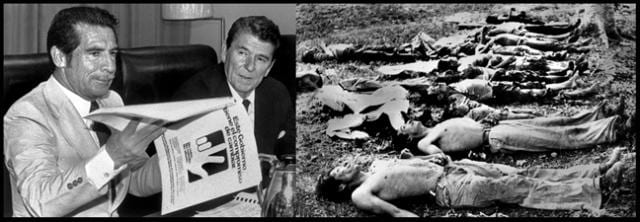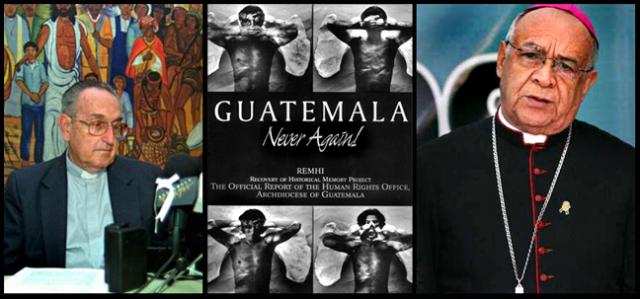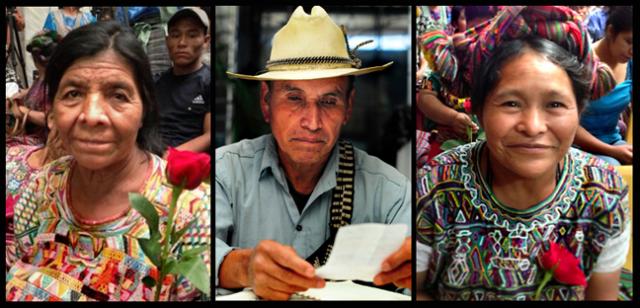The election of Pope Francis marks a turn in the prolonged crisis of the Catholic Church. It is important for revolutionaries to understand the reasons for the ongoing struggle within the Church. Far from moving to the left, Francis is trying to entrench the Church in defence of the present system and shield it from revolution and the class struggle. Francis is calling for the Church to renew itself and to move towards the poor. This is raising expectations within the popular masses of the Church but will inevitably collide with the brutal reality and the vested interests of the Vatican apparatus.
“(…) Benedict was at the time much more aware of the political situation than many other writers, analysts and journalists. And he clearly identified what to fight against. His problem, then and now, was that instead of a church on a war footing, like that envisaged by Ignatius of Loyola, he had in his hands a church seeped in the quest for profit and ‘fashion’, where his bishops and cardinals cared more about their earthly affairs than their actual duty of combatting for the kingdom of heaven.” (Luiz Bicalho, The resignation of Benedict XVI – Truths and Lies)
If we, as Marxists, were aware of this problem, the college of cardinals, the Conclave that elected Francis, also showed they were. They know what it takes to do something with this pachyderm which oozes from every pore mud, lies, immorality, wealth, methods and actions of which the Italian mafia, Cosa Nostra, would be envious.
The problem is that any attempt to shift towards recovering the Catholic Church as a militant church, clashes with the reality of what today is the Vatican and its international structure. So the Conclave attempted a new feature by electing a Jesuit Pope, the first of this order to achieve this position. Yes, Francis can be criticized in many ways, as Benedict XVI could be. First and foremost for his behaviour towards the Argentine dictatorship. But the Jesuits are a much more dangerous opponent than other religious orders, and with this article we aim to remind you of this fact.
The origin of the Jesuits
The Middle Ages, the time of lords and serfs, began its decline between the fifteenth and eighteenth centuries, its crisis culminating in the English revolution of 1640 and the French revolution of 1789. But the bourgeoisie had a fair share of economic power in these centuries and the invention of the printing press, the great voyages of discovery that opened the world to a new trade and economic power, the financial ruin of the nobility, the cities that were achieving their freedom charters, all showed a new world that was emerging.
In feudalism, as in antiquity, the rule was simple: the people’s religion was that of the feudal lord, the king. And whoever did not agree was dead. Religion was part of the structure of the state, was one of the pillars of the structure of domination. The bourgeoisie, albeit unconsciously, began to challenge it. And it was so that priests like Luther and Calvin who challenged the dogmas of the Catholic Church had a much bigger impact than others who had failed previously. The new class which was emerging found its spokesmen amongst religious scholars disputing the official church.
The Catholic Church, meanwhile, began to adapt to the new times. On the one hand, taking positions which were more “compatible” with the modern world, adapting to the changing times in which interest and trade were allowed and, on the other hand, establishing a special group of militants, organized, armed and fighting for the supremacy of the Catholic Church itself, at all levels. It did so by fighting for educating, by preaching, by enforcing the conversion of new people (the world was growing and expanding – from the point of view of the Europeans – meaning that there was a whole world to conquer and convert) and even by ways of confrontation including armed conflict. Ignatius of Loyola, first Superior General of the Jesuits, a former soldier wounded in war, was the man building this apparatus. He created the Jesuit order, a military order that has obedience in its motto.
Fiercely criticized by all their opponents, Trotsky briefly recalls the role that these men played in the maintenance of the Catholic Church:
“ ‘The End Justifies the Means’
The order of the Jesuits achieved successes and failures, and together with the whole of Catholicism, became in the late nineteenth and early twentieth century an army deployed in the fight against communism. But the time of the priest warriors was, at least for most of them, past. Still, they fulfilled and played a role in the class struggle. A large number of priests who embraced the liberation theology came from their ranks, and even if a few passed on our side, to the side of the revolution, most followed the path of Francis as critics of the evils of capitalism (but in order to better defend this system) and preaching that Christian charity and prayer to God will solve our problems, if not on earth, in heaven perhaps.
Trotsky, taking stock of the Church in general and of its fighting body, the Jesuits, thus ended his short analysis:
“However, the juxtaposition of Bolshevism and Jesuitism still remains completely one-sided and superficial, rather of a literary than historical kind. In accordance with the character and interests of those classes upon which they based themselves, the Jesuits represented reaction, the Protestants, progress. The limitedness of this ‘progress’ in its turn found direct expression in the morality of the Protestants. Thus the teachings of Christ ‘purified’ by them did not at all hinder the city bourgeois, Luther, from calling for the execution of revolting peasants as ‘mad dogs’. Dr. Martin evidently considered that the ‘end justifies the means’ even before that maxim was attributed to the Jesuits. In turn the Jesuits, competing with Protestantism, adapted themselves ever more to the spirit of bourgeois society, and of the three vows: poverty, chastity, and obedience, preserved only the third, and at that in an extremely attenuated form. From the point of view of the Christian ideal, the morality of the Jesuits degenerated the more they ceased to be Jesuits. The warriors of the church became its bureaucrats and, like all bureaucrats, passable swindlers.” [2]
Yes, this is true for most Jesuits, but we must remember that they are still the largest Catholic order that exists today and that our bishop of Rome, Francis, seems to follow the three vows with conviction. We do not know yet to what extent he can achieve that these three vows win a majority in the Church, but we know he is not just a “supporter” of dictators. After all, he ran against Benedict XVI, lost the election in the last conclave and, unlike other losers, did not desist and came back, this time being elected, against all predictions by the Vatican “experts”.
A militant Pope
As soon as this committed and dedicated right-wing militant was elected, he abruptly broke with all the signs of the bureaucracy and has made the media his allies. He solemnly despises the charges of collaborating with the dictatorship and, as Benedict XVI, he is discussing issues which are important to the mainstream media like the legalization of drugs and homosexuality. But going straight to the point, appealing to the kindness of the rulers and powerful of the world:
“Please, I would like to ask all those who have positions of responsibility in economic, political and social life, and all men and women of goodwill: let us be ‘protectors’ of creation, protectors of God’s plan inscribed in nature, protectors of one another and of the environment. Let us not allow omens of destruction and death to accompany the advance of this world! But to be ‘protectors’, we also have to keep watch over ourselves! Let us not forget that hatred, envy and pride defile our lives! Being protectors, then, also means keeping watch over our emotions, over our hearts, because they are the seat of good and evil intentions: intentions that build up and tear down! We must not be afraid of goodness or even tenderness!” [3]
Yes, this is Francis, the cardinal who was a friend of dictators in Argentina and consistently fighting for his agenda. Similarly, adhering to the lifestyle of the early Jesuits, Francis prefers using public transport, cooks his own food, lives in a small apartment and does not carry on himself signs of wealth or anything that could remind of the scandals of sexual abuse. But he is also a militant and combative partisan of his cause. Unlike Benedict, who accepted the display of wealth, Francis is trying to abolish it but probably, like Benedict, he will collide with the bureaucratic routine of the Vatican, the Roman Curia.
In the last conclave, he ended up second in the race of the vote, against Benedict XVI. But then he took advantage of the time he was given to campaign for his cause. He broadened his circle of friends and gained as one of his more faithful constituents and counsellor Cardinal Claudio Hummes, former Archbishop of São Paulo, and successor of Cardinal Archbishop Emeritus Evaristo Arns. If Arns was identified with the Catholic left and the struggle against the dictatorship, this is not exactly the case for Hummes, a man handpicked to change the ostensibly leftist face of the Church of São Paulo. Claudio Hummes, was archbishop of São Paulo, then cardinal; in the Roman Curia he was Prefect of the Sacred Congregation for the Clergy – a man from within the apparatus. At the last annual meeting of the National Conference of Bishops of Brazil, held in Aparecida, it was him that chaired the committee which drafted the final document of the Assembly.
Moreover, Francis goes back directly to the Gospels and unlike the major theological studies of Benedict, he appeals directly to the early writings of the Church, the militant Church, but a militancy that preaches peace on earth, “give to Cesar what belongs to Cesar”, and hope in heaven as a way to solve social problems. So, that which Francis preaches is charity and forgiveness:
“Rerum Novarum lists errors that give rise to social ills, excludes socialism as a remedy and expounds with precision and in contemporary terms ‘the Catholic doctrine on work, the right to property, the principle of collaboration instead of class struggle as the fundamental means for social change, the rights of the weak, the dignity of the poor and the obligations of the rich, the perfecting of justice through charity, on the right to form professional associations’.” [6]
As Marxists, it is worth understanding the reasons for the ongoing struggle. We need to understand that this fight, which initially has rallied even many Catholics who define themselves as leftist, in defence of Francis, will inevitably collide with the brutal reality, with the class struggle and the cracks which cannot be repaired within the Vatican apparatus. This will release many forces in the grassroots of the Church and will cause a lot of demoralization. The wind of change will clash against bureaucracy, luxury and Church property. Through this traumatic experience many who today retain their faith and look with hope, will liberate themselves and move towards the revolution. Others will be co-opted by the counter-revolution. Understanding this process will help those who honestly want to help the liberation of the poor and help them understand the process of class struggle and decide to become fighters for the revolution. This is the task that is imposed on us.
[1] Trotsky, Their Morals and Ours, 1938.
[2] Ibid.
[3] Homily of Pope Francis, March 19, 2013.
[4] Address of the Holy Father Pope Francis, March 16, 2013.
[5] The Church has shown a tremendous ability to adapt to new times, unlike other institutions. It began as the religion of the poor, slaves and destitute. It grew from the defeat of the revolt of Spartacus, symbolizing the Roman Empire could not be defeated on Earth, but only in heaven. It was adopted, then, by emperor Constantine as a way of holding together the empire at a time of decadence in the face of barbarian invasions. Later, it adapted to the changing times and “evangelized” the barbaric conquerors, providing them with the ideological apparatus and that of justice necessary for a “regular” functioning of the feudal system. The price for this was paid with the schism of the East (Orthodox Church). Its conversion to capitalism was also slow and cost the Church the schism of “Protestantism”.
[6] Compendium of the Social Doctrine of the Church, 2004
http://www.marxist.com/the-jesuit-pope-who-is-francis-and-who-he-pretends-to-be.htm










